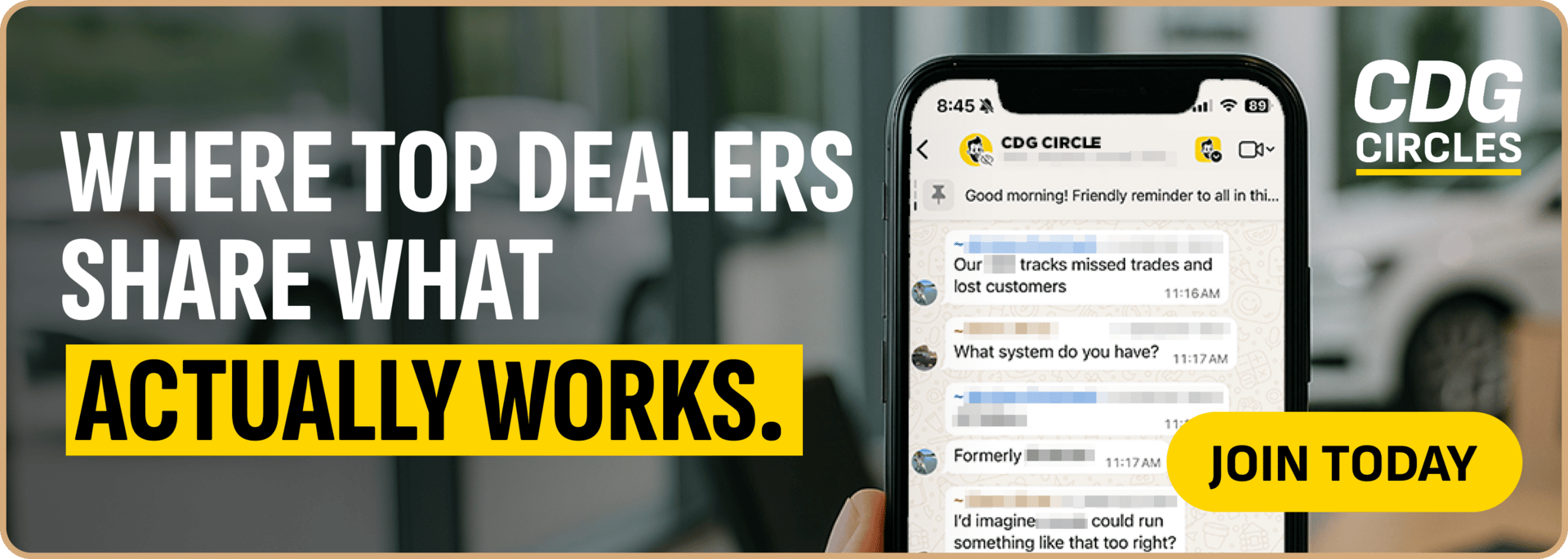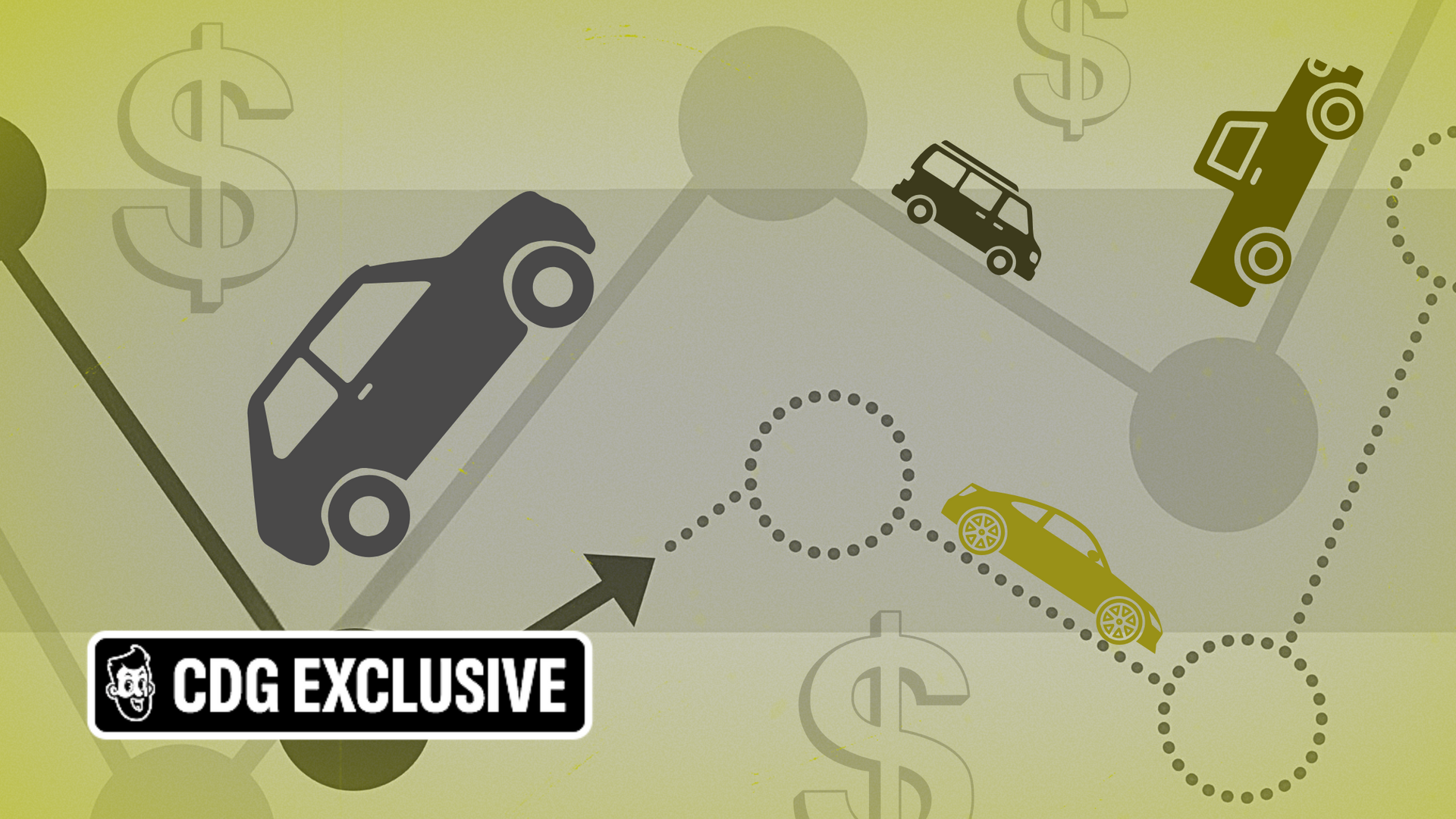
Presented by:
Hey everyone,
In case you missed it, we’ve just opened the latest CDG Dealer Outlook Survey (Q4 2025), exclusively for dealer principals, managing partners, and group executives.
It only takes two minutes to complete, and we’ll be sharing a full analysis of the results in the coming weeks.
Survey closes Thursday, 11/13 at 11:59 p.m. EST.
*Your individual answers are fully confidential and will not be shared with anyone.
Welcome to the Market Pulse—your no-fluff cheatsheet to auto retail, built to help dealers price right, stock smart, and stay ahead.

A new kind of car buyer is reshaping the market: Roughly 40% of U.S. consumers now identify as buyers who prioritize quality, fairness, and flexibility over brand loyalty or lowest price.
Used vehicles are holding as the smarter buy for many: The average used payment now sits around $559 vs. $756 for new.
And that’s redefining how dealers stock and pitch inventory: Late-model, feature-rich used cars are becoming the new frontline products, proof that “used” can mean smart, modern, and high-margin when positioned right.
(Source: Deloitte / Cox Automotive / CDG analysis via Joe Cecala)

A new type of car shopper is redefining dealership strategies for 2026.
With new-car prices now landing above $50,000 and 62% of Americans saying they can’t afford one, it’s easy to assume buyers are just hunting for the cheapest unit they can find.
However, new data from Deloitte shows that a growing segment of shoppers, about 40% of U.S. consumers, now fall into a group known as “value seekers.”

CDG analysis via Joe Cecala
These buyers want confidence that their money’s being spent right. Many are younger, higher-earning families who value quality, fairness, and flexibility over brand loyalty.
And they mean it: 54% plan to switch brands next cycle if they don’t see consistent, transparent value.
Even ownership isn’t guaranteed anymore. The report indicated that 44% of 18–34-year-olds say they’re open to subscriptions or mobility alternatives instead of buying outright.

NOTE TO DEALERS:
With loyalty breaking down and younger buyers rethinking ownership altogether, this is a real moment to redefine what “value” looks like on your lot.
Step one: Train your team to ask every shopper what drives their decision, whether it’s price protection, flexibility, or long-term reliability, and record those priorities in your CRM.
Then, use that info in real time to guide next steps:
If they want flexibility, lead with lease or subscription options.
If they want confidence, highlight certified and warranty-backed vehicles.
If they want affordability, show the total cost of ownership, not just price.

Redefined buyer priorities are steering profits and dealer focus toward used inventory.
As buyers rethink what “value” means, the impact is showing up squarely in the used lane.
What we know: Used-car demand is up 6.1% YoY, marking the strongest pace since 2021, even as overall retail volume stays flat.
This tracks with what’s happening on the ground when you consider how higher 2026 MSRPs and the end of EV tax credits have priced more shoppers out of new, pushing them to rethink what “smart buying” looks like.
Just take a look at this:

CDG analysis via Joe Cecala
When the average used payment lands around $559 vs $756 for new, it’s no surprise more shoppers are choosing the used lane as the smarter path. They’re still getting warranty coverage, modern tech, and strong trade-in potential, just without the $200-a-month stretch.

WHY IT MATTERS:
Per Edmunds, shoppers of three-year-old vehicles cluster in two sweet spots:
Low-priced units under $15K, where buyers overlook mileage for affordability…
And near-new models around $30K–$35K with low miles and premium condition.
That means dealers should be stocking what sells (the extremes on both ends) and making their pricing clear so shoppers can see why it fits their budget.
A quick word from our partner
Non-compliance isn't an option.
FTC and state regulators are actively targeting dealers with escalating fines and enforcement actions across safety, privacy, and F&I compliance.
KPA’s Complete Compliance Suite is the only all-in-one solution that protects dealers from every compliance risk.
Our integrated software, expert consulting, and award-winning training address every compliance gap, help you reduce insurance premiums, mitigate liability exposure, and protect your dealership's reputation.
Stop managing compliance manually with patchwork solutions that leave you vulnerable to audits and lawsuits.

For this week’s edition, we asked several operators how their teams are navigating the shift in what “value” means. Meaning, how they recognize it, deliver it, and sell it.
Here’s what they told us…
Do: Use videos to help shoppers see value before the sale starts.
One of the main steps in helping dealership teams communicate a sense of value to shoppers is something Jeff Ramsey’s team at Ourisman Auto Group does clearly and consistently.
The strategy: His group uses DriveCentric to send personalized video messages to every lead and reviews them daily to coach communication quality.
“We’re ranking each day on how many videos each store sends. We want them to be at a certain percentage of the total opportunities they had. So the focus is on how the message is communicated, we control the tone in which it's communicated to the customer, and we'll even click through them and show areas where they can improve,” Ramsey said yesterday on Daily Dealer Live.
Don’t: Ignore the value in offering crystal clear trade offers.
Ramsey said his team learned quickly that “getting customers real answers” on their vehicles, especially around what their car is worth and how soon they can get out of a payment, has been key to keeping conversion strong even as lead volume softens.
During the same show, Cars Commerce’s Brian Kramer echoed this sentiment, adding that shoppers who don’t get a clear trade value online will bounce to whoever will give it to them, often CarMax, Carvana, or a better-prepared dealer down the street.
In other words, vague price ranges and unclear next steps will lose a buyer’s interest, trade or no trade. Most just want to know what they paid, what they’ll pay, and why it makes sense to do business with your store.
That’s something GM Devin Kaulback at Subaru of Niagara has turned into a daily practice.
His team rolled out an AI-driven appraisal tool (Drive AI by Unleash Technologies), and since integrating it, the store has added 20 to 30 extra retail units a month, with over 70% tied to trades.
How it works: The tool syncs with the store’s CRM and DMS to spot ready-to-trade customers, then sends them tailored “upgrade my ride” offers.
Not too shabby for a piece of tech he only expected to deliver better data, not bring an immediate sales lift.

All value is perceived value.
Which just means the customer decides what’s worth paying for. Not the store, not the OEM, not the market report.
Right now, that matters more than ever, because when a $25K used compact and a 2025 new crossover are fighting for the same shopper, buyers are going to go where the value feels most real.
If you had to double down on one lever to prove value in your store, which would it be?
Missed yesterday’s episode of Daily Dealer Live?
Presented by:
Auto Marketing Monday w/ Jeff Ramsey, Brian Kramer, and Dustin Clark
Featured guests:
Jeff Ramsey, CMO of Ourisman Auto Group
Brian Kramer, EVP, Dealer Growth & Success at Cars Commerce
Dustin Clark, CMO of Andy Mohr Auto Group

The latest updates to CDG’s Buy/Sell Tracker.

















